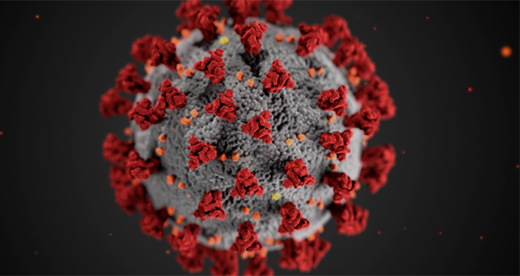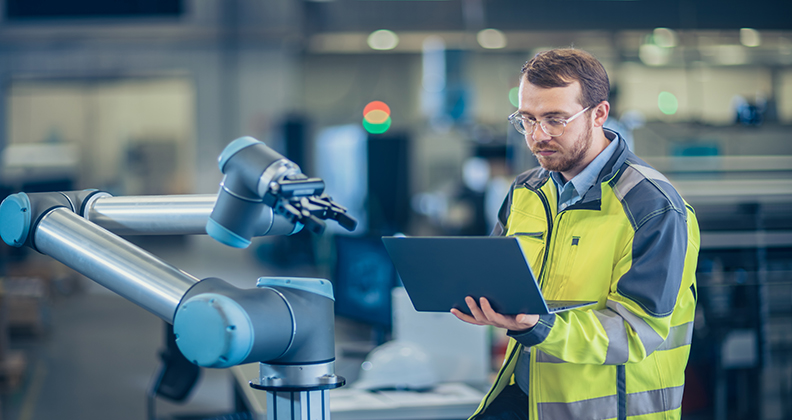
COVID-19 has the potential to affect the work of orthopedic professionals profoundly—both how work is conducted and the end product that is created. The professionals who are acutely aware of the changes that will evolve can better position themselves and their teams for success.
For perspective on the topic, we turned to Tiger Buford, an orthopedic executive, thought leader and recruiter who has been writing extensively about COVID-19 and has himself made multiple professional transformations. He is an independent voice without a company-specific agenda.
Buford began his career in an internship at the testing lab of Richards Medical (now Smith+Nephew) while studying Mechanical Engineering at the University of Memphis. After seven years of knee development at Smith+Nephew, he sought out smaller orthopedic environments and joined Intermedics (ultimately acquired by Zimmer Biomet). He then led R&D management at Wright Medical in knees, extremities and biologics. Next, he went really small and led product development inside three pure startups with one-of-a-kind technology concepts—NovaLign, Active Implants and Ellipse Technologies. Realizing that he loved the people side of the business, and with some motivation from his recruiter friends, he started full-time retained recruiting for early-stage orthopedic companies at TigerRecruiting.
We asked him questions about how technology and the roles of product development and sales and marketing will change post-COVID-19.
What technologies will be impacted the most by COVID-19?
Buford: I talk with orthopedic leaders every week, and I‘m surprised by how many think that we are going back to normal in a few months when elective cases are finally rescheduled. We are not.
Think of the COVID effect as a disruption accelerator for the orthopedic industry. We are time traveling to 2030 in disruption now.
Some orthopedic companies were going out of business in a few years anyway; now, it’s three months. Virtual reality (VR) surgical training was a decade phenomenon; now, it’s months. Big robot systems were going to be eclipsed by new, small, integrated ubiquitous systems in years; now, it’s months. Remote work was trending for years; now, it’s today. And so on.
The short answer is that the technologies and systems in trouble are those that create a burden for hospitals and ASCs. Post-COVID, healthcare systems will have less tolerance for huge inventories, steam autoclaving trays, big robots and complex systems that require sales reps’ service on site.
What are three or four other trends that will be accelerated due to COVID-19?
Buford: All familiar buzz words, but these four are becoming real now—virtual rep service, VR surgical training, telemedicine throughout the care cycle and genomics work-ups to specialize treatment.
You’ve mentioned in your articles that 25% of orthopedic companies could fold due to COVID-19. What’s behind that statement, and to what type of companies are you referring?
Buford: My viewpoint is biased toward startups and early-stage device companies. There are thousands of orthopedic companies; most are small and not yet profitable. The IPO market will be closed for the next 12 to 24 months. Venture capital funding is gone. Angels are moving away from investments. So, any pre-revenue device company without a financial runway of at least 18 months is in trouble. Many bigger companies are in trouble, too. If your company is over-leveraged and publicly-traded, you face a triple threat of sales decline plus valuation decline plus nowhere to get new funding.
The safe place is to have ongoing revenues, cash on hand and no debt. Companies like a Globus Medical with zero debt and millions in cash will have a field day buying up technology at huge discounts. Look for a lot of M&A activity in 2021.
What should companies be asking themselves today?
Buford: Losing companies will ask, “How do we get back to normal?” Winning companies will ask, “How can we change our company to adapt to the new environment?” There are so many clarifying questions that companies should be asking right now. For instance…
- How can we improve our scheduling, delivering, sterilizing and servicing businesses to put less work and less stress on physicians and hospitals/ASCs?
- How can we shift more sales from hospital to ASC customers? There will be a procedure shift to ASCs because they are more efficient and are not dealing with COVID.
- How can our sales reps provide surgery support with less human contact? I would implore you to visit Avail.io for an early example of virtual support.
- How can we “certify” that our sales reps are COVID-free before they enter the hospital?
- How can we train surgeons on new systems without in-person medical conferences or centralized cadaver labs?
- With fewer medical meetings and face-to-face opportunities with your surgeon customers, how can we leverage digital marketing to reach our surgeon customers?
Knowing that the orthopedic industry could look very different a year from now, what should engineers be doing today?
Buford: This one is personal. I was trained in Mechanical Engineering, like most engineers working in orthopedics today. I talk with engineers every day in recruiting, and I steer them away from the MBA and toward complementary technology degrees.
Technology in orthopedics is quickly transforming from 90% mechanical to 50% mechanical. In this decade, innovation requires a combination of mechanical, software, vision, mechatronics, electrical and artificial intelligence/machine learning. I find myself doing more and more recruiting searches for Software Engineers today. The CEOs of the future will have combination technical degrees, not MBAs.
If I were a young engineer today, I would complement my education with either coding or electrical engineering.
What should sales and marketing be doing today?
Buford: In the short-term, sales professionals should figure out ways to prove to hospitals that you are COVID-free. Also, you must be prepared to supply and service hospitals for really long shifts, as some hospitals will go 24/7 with elective procedures. Longer-term, I believe there will be less human contact between sales and surgeons, so you may have to adjust the way you deliver training and service.
On the marketing side, so far as I see, most companies will default to webinars to talk about their products to surgeons. They want to control the message and control who has joined the webinar. This desire for control is a bit too cozy and not really effective, because typically the surgeons already know each other, and it becomes a promotion-fest. Marketing teams should think bigger and start experimenting with targeted digital marketing campaigns to have meaningful engagement with both surgeons and patients at home on their own time. This is the future of marketing in orthopedics.
What can history teach us about what a new innovation or product development cycle might look like after this difficult time?
Buford: Let’s face it. Most orthopedic companies are copying each other. At the trade shows, you see similarities in hip systems, expandable cages, bone plates, etc. Truly innovative companies work from fuzzy surgeon ideas then quickly prototype and test.
“True” innovation in orthopedics has historically come from a powerful combination of an unconventional surgeon founder plus a device company not afraid of taking risks. You have to have both ingredients. I can think of multiple examples.
Masaki Watanabe, M.D., invented arthroscopy and Dyonics did the development work and regulatory work to commercialize it.
Gavriil Ilizarov, M.D., invented distraction osteogenesis and Smith+Nephew did the development and regulatory work to commercialize the Ilizarov system.
Mark Reiley, M.D., invented kyphoplasty and Kyphon did the development and regulatory work to commercialize it.
George Bagby, M.D., invented spinal cages and SpineTech did the development and regulatory work to commercialize the BAK.
Marshall Urist, M.D., discovered bone growth factors; Wyeth developed synthetic versions of BMP and Danek did the development and regulatory work to commercialize INFUSE.
Charlie Taylor, M.D., invented the Taylor Spatial Frame, the first Ex-Fix with an algorithm, and Smith+Nephew made it happen.
Today, more than ever, there is an abundance of surgeons with fresh ideas. Unfortunately, because of the friction of regulations and legal work, many surgeons don’t want to work with the large orthopedic companies. This draws surgeons to the early stage companies that are fast and responsive.
Tiger Buford is an independent voice in orthopedics through recruiting, blogging, podcasting and consulting. His popular blog promises “honest insights about the Orthopedic industry.” You can follow him on LinkedIn, Twitter or YouTube at @tigerbuford or reach him by email.
CL
Carolyn LaWell is ORTHOWORLD's Chief Content Officer. She joined ORTHOWORLD in 2012 to oversee its editorial and industry education. She previously served in editor roles at B2B magazines and newspapers.




